Ever tried to figure out how many days is 6 months and ended up more confused than before? Some say it’s 180 others say 182 and then leap years make it even trickier. It’s a simple question but the answers floating around can leave you second to guessing yourself.
In this post we’ll break it down clearly so you’ll know the exact answer without the confusion. You’ll see the quick calculation the common variation and how leap years or specific months can change the total. By the end you’ll never wonder about this again.
The Quick & Simple Answer Average Calculation
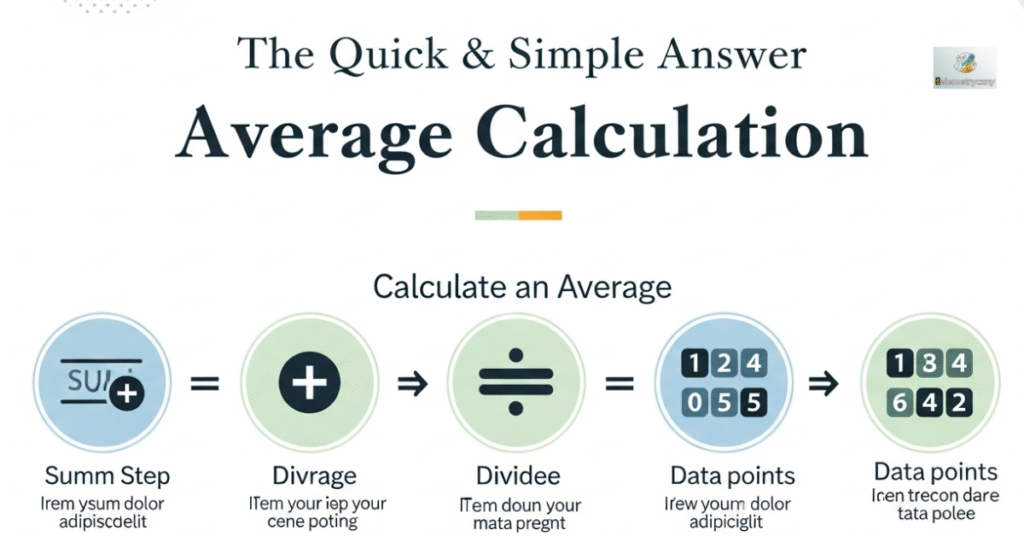
One quick method for finding the number of days in six months is to spread the year evenly across its months. There are 366 days in a leap year compared to 365 in a typical calendar year. An average of 30.44 days each month is obtained by dividing 365 by 12 months. Now if we multiply this monthly average by six the total comes out to nearly 182.6 days which we usually round up to 183 days meaning almost half a year.
This average calculation is widely used in general reference calculators and even financial contracts when exact months aren’t specified. For example if you’re calculating loan repayments or interest banks often assume each month has 30 or 30.44 days. It’s not a perfect reflection of the calendar but it provides a consistent standard.
However real life doesn’t always follow averages. Six months don’t always add up to the same number of days. Counting from January will produce a different outcome than counting from March June or September. The span of six months can range from 181 to 184 days based on the month combination. Averages provide a quick guideline but if accuracy is critical for example in medical treatments or legal agreements you need the exact day count.
So the short answer:
- Average six months = 183 days.
- But exact days vary between 181 to 184 days depending on the months chosen.
This is the starting point. Next we’ll explore how month by month differences affect the total days in six months.
See More: How Many Days Is 6 Months
Month by Month Breakdown of 6 Months
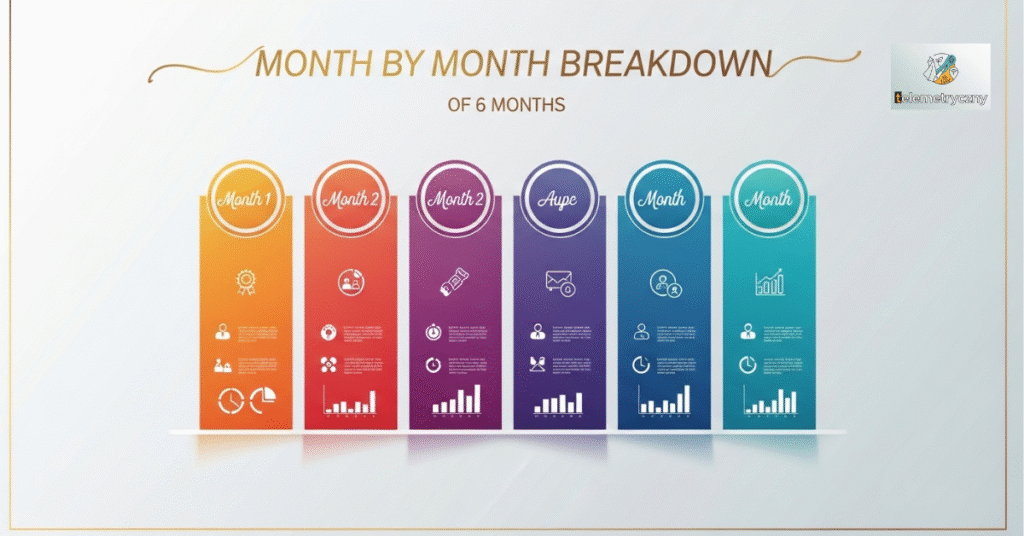
Now that we know the average let’s look at how six months actually play out on the calendar. Since every month doesn’t have the same number of days the total depends on where you start counting. When we look at a six to month stretch, the number of days isn’t always the same. Most of the time it comes out to 181 days sometimes it’s 182 every now and then it can be 183 and in very rare cases it even reaches 184.
Here’s a simple breakdown:
- January June 181 days (182 in leap year
- February July 181 / 182 days
- March August 184 days
- April September 183 days
- May October 184 days
- June November 183 days
- July December 184 days
- August January 184 days
- September February 181 / 182 days
- October March 184 days
- November April 183 days
- December May 184 days
So six months can mean 181 182 183 or 184 days the exact number depends on where you start counting. Averages 182.6 days are fine for rough math but real to life things like loans contracts or academic schedules need the precise count.
As you can see the number changes depending on the months The minimum is 181 days. 184 days is the longest. That’s why people often get confused the calendar itself creates this variation.
In short:
- Shortest 6 months = 181 days
- Longest 6 months = 184 days
- Average 6 months = 183 days
This makes it clear why using a calendar gives the most accurate result.
Leap Years and Their Impact on 6-Month Calculations
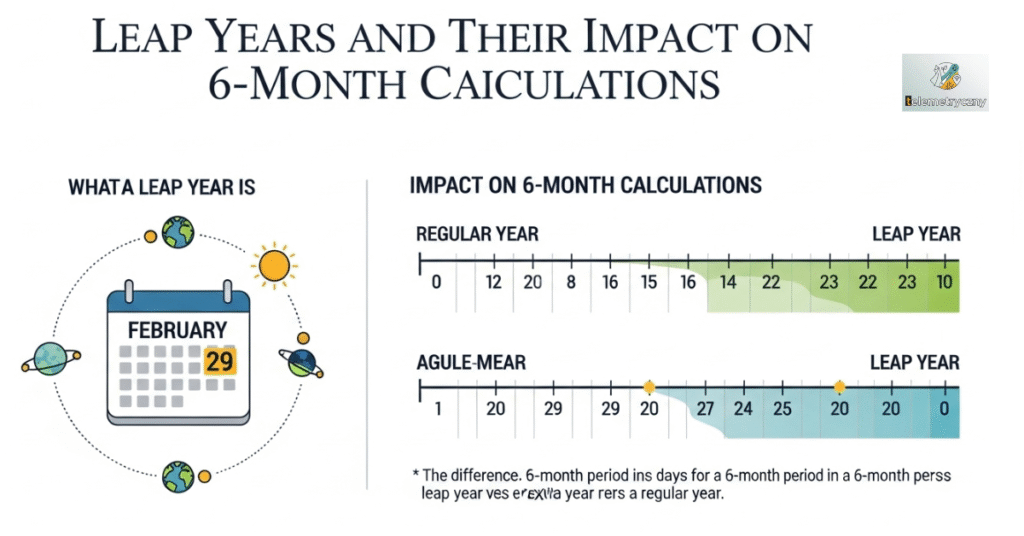
Leap years are one of the main reasons people don’t get a single fixed number for six months. In a leap year February lasts 29 days instead of 28. It looks like just one extra day but that single change flips the whole year to 366 days. And when you’re counting months planning payments or setting schedules even that one day can make all the difference.
So what does this mean for a 6 to month calculation?
- If your 6 to month period includes February in a leap year you’ll have 182 days instead of 181 or 184 instead of 183.
- If your 6 to month period does not include February then the number of days won’t change it remains the same as in a regular year.
Let’s compare an example:
If you count from January 1 to June 30 you’ll get 181 days in a normal year. In a leap year it becomes 182. It’s just a one to day difference but in real life even a single day can matter whether you’re talking about loan paymentsinterest calculations contract deadlines or school calendars. That’s why systems that handle time to sensitive data always make sure leap years are included otherwise small mistakes can turn into big problems.
Another thing to remember when people say a month is about 30.44 days long that’s not a number pulled out of nowhere. Leap years are already part of the math. Since an average year is about 365.25 days dividing that by 12 months gives you roughly 30.44 days per month. Multiply by six and you get 182.62 days.
But remember that number is just a neat average for quick math not the exact day count you’ll find when you actually look at a calendar. On an actual calendar the number of days can shift depending on which months you’re counting. In short leap years only shift your 6 to month calculation by one extra day if February is part of your timeline.
Real Life Uses of 6-Month Day Calculations

Knowing how many days is 6 months isn’t just a random curiosity it has real to world value in many areas of life. Whether you’re managing finances planning health goals or scheduling education timelines the exact day count can make a difference.
1. Finance & Banking
Banks credit card companies and loan providers often calculate interest over 6 to month terms. For example if you borrow money on January 1 and need to repay in six months the lender will count the exact days 181 182 or 183 depending on months included. Even a single day affects interest charges or penalty fees.
2. Health & Fitness
Doctors and fitness trainers also use 6-month periods for check to ups or progress tracking. For instance many dental cleanings medical tests and fitness evaluations are scheduled every 6 months. Counting the right number of days helps ensure appointments stay accurate.
3. Education & Academic Calendars
Schools colleges and training institutes often divide the year into two 6 to month semesters. The actual day count decides how many teaching days are available which then affects exam schedules and holidays.
4. Employment & Work Contracts
Many probation periods internships or temporary contracts last exactly six months. Companies use precise day counts to decide start and end dates. For payroll and benefits those extra 1 to 2 days can matter.
5. Personal Planning
People also use 6 to month timelines for personal goals saving money weight loss travel plans or even countdowns to weddings. Knowing the exact days gives a clearer sense of progress and deadline.
In short a 6-month calculation isn’t just about numbers it’s about accuracy in planning. Whether money health studies or personal life one or two days can make a surprising difference.
See More: Digital Analyzers in Software
Month by Month Examples of 6-Month Periods
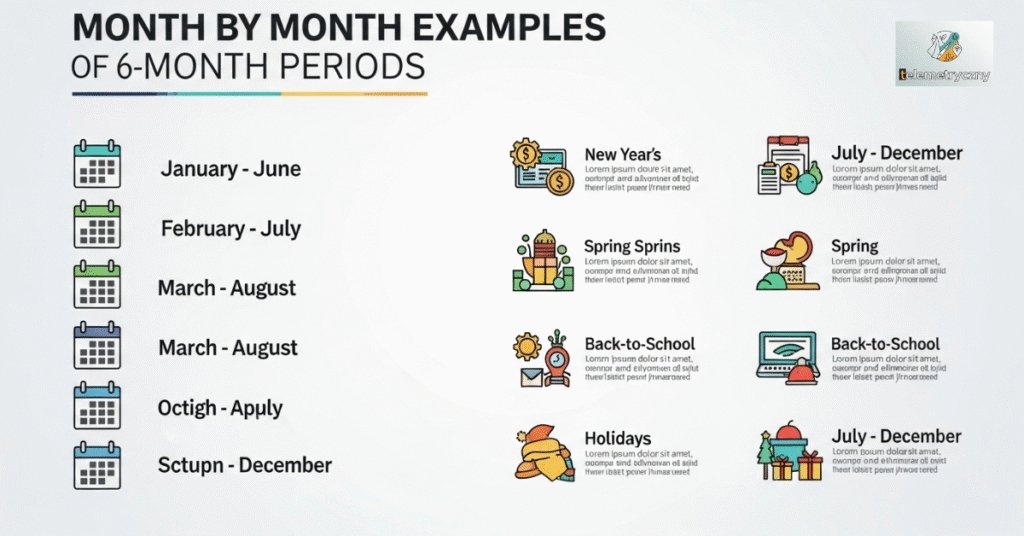
Checking actual examples is the simplest method to determine how many days there are in six months. The number may vary depending on where you begin counting because different months have different lengths. Six months don’t always have the same amount of days on the calendar because of this.
Example 1: Starting in January
- January (31) + February (28 or 29) + March (31) + April (30) + May (31) + June (30)
- Total: 181 days in a normal year, 182 in a leap year
Example 2: Starting in April
- April (30) May (31) June (30) July (31) August (31) September (30).
- Total 183 days.
Example 3: Starting in September
- September 30 October 31 November 30 December 31 january 31 February (28/29).
- Total 181 or 182 days.
Example 4: Starting in June
- June 30th August 31 July 31 August 31 September 30 31 October 30 November.
- 183 days in total.
It’s easy to see why the count changes six months can mean 181 182 or 183 days depending on the calendar and leap years. For convenience some systems like banking or exam schedules use a fixed standard of 30 days per month giving 180 days for six months. In reality however a true calendar span almost always falls between 181 and 183 days.
Conclusion
So how many days is 6 months? The answer isn’t always one fixed number. If you go by the simple formula six months are treated as 180 days just 30 days multiplied by six. Sounds neat, right? But the actual calendar doesn’t play out that perfectly. Some months are longer February is shorter and in leap years you get an extra day.
That’s why the real six to month span can be 181 182 or even 183 days depending on where you start. To avoid confusion, most calculators and systems stick with the average about 182.62 days which balances things out over time. It’s not exact but it keeps everyday math simple
A tiny detail like this can shape big decisions in real life. From legal agreements and banking to travel plans exam schedules pregnancy tracking and everyday time management it all depends on how months are being counted. Always make sure whether the rule assumes every month has 30 days or follows the true calendar days.
FAQS
Is 6 months always 180 days?
That’s only true on paper. Using the 30 to day month rule gives you 180 days for six months. In reality though a six to month span almost always works out to 181 to 183 days depending on the calendar.
How many days are in 6 months in a leap year?
If February is included in the six months then the total will be one day longer (182 or 183 instead of 181 or 182).
Why do some calculators show 182.62 days for 6 months?
The average length of a month is used to determine that figure. When you divide the 365.2425 days in a year by 12 you get 30.436875 days in a month. The result of multiplying by six is approximately 182.62 days. It is not a precise count of days in any six to month period rather it is a statistical shortcut.
In six months how many weeks are there?
Six months usually equal about 26 weeks sometimes a few days extra.
Do banks and contracts use exact days or 180 days?
It depends Many contracts use a fixed 30 days 1 month standard so 6 months 180 days. But in real to world calendar terms deadlines are usually counted using actual dates which may equal 181 to 183 days.
Why is knowing this important?
Because it affects legal documents work probation periods exams loan repayments visas and even pregnancy tracking. A difference of just a couple of days can matter.
Hi,
I’m Tehreem, a content writer specializing in SEO-optimized articles that rank and engage. Whether it’s AI-assisted or fully human-written content, I deliver clear, creative, and results-driven writing.

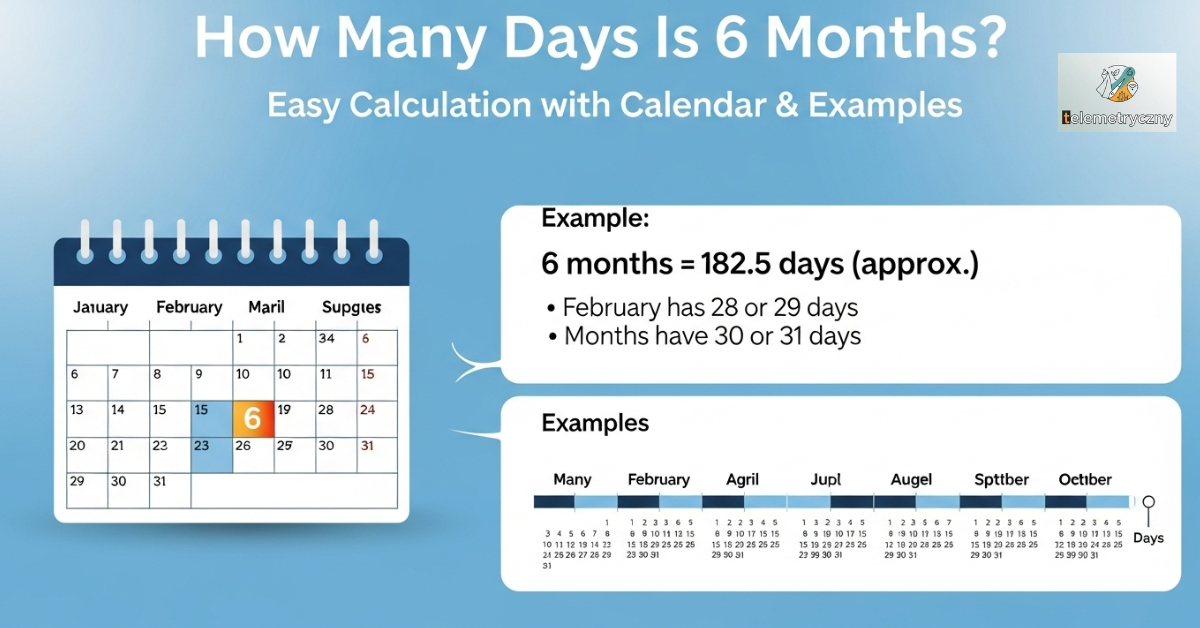
2 thoughts on “How Many Days Is 6 Months? Easy Calculation with Calendar & Examples”